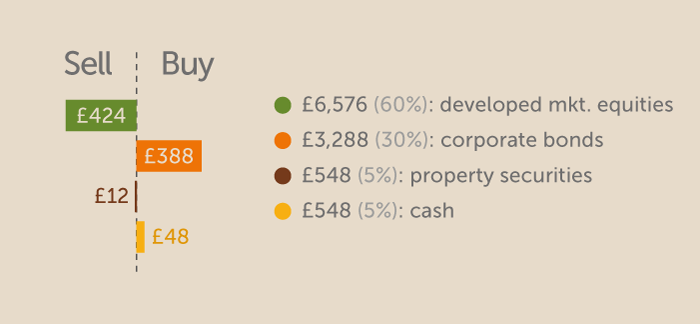Rebalancing Your Portfolio is Necessary Here’s How to Do it
Post on: 20 Май, 2015 No Comment

When it comes to playing the stock market, everyone knows the goal is to buy low and sell high, but all too often, the opposite happens.
Part of the blame falls on investors for not regularly checking-in on their portfolios. According to Fidelity Investments, less than 5% of 401(k) participants make any type of changes to their investment mix in a given year, which is why experts say
“Every investor should consider regular portfolio rebalancing,” says Charlie Massimo, CEO and founder of CJM Wealth Management. “When your weighting gets out of whack sell some gains and rebalance the part of the portfolio that performed the poorest. It forces you to sell high and buy low which most investors don’t have the discipline to do.”
The re-balancing process will vary for different investors, but the idea behind it is to make sure investments still jive with long-term financial plans and current lifestyle. Rebalancing is also a defensive move to protect yourself from major dips in the stock and bond markets that can wreck-havoc on investments.
Consider the last two bull markets as evidence. During the dot-com boom, investors who bought tech stocks and forgot about them found themselves stuck with a lot of tech-related equities when the market subsequently crashed. Same goes with the run up in 2008. Investors who purchased a lot of bank stocks and then did nothing about their overweighed position took a large hit when banks imploded.
“We are generally passive investors ourselves but we actively rebalance,” says Chris Cook, founder and president of Zero Commission Portfolios. “We monitor our portfolios daily to be sure those positions are not becoming too over weighted or underweighted.”
It may not be realistic for the average investor to look over their investments each day, but money managers recommend regular portfolios reviews.
According to John Sweeney, executive vice president at Fidelity Investments, a simple way to rebalance is for investors to put a check in their calendar every so often as a reminder to check their portfolio. Another option: investment in a mutual fund that does it automatically.
But even before investors can think about a rebalancing strategy, they have to have a plan as to how much risk they can handle. Without having a plan, money managers say it will be impossible to rebalance to meet any goals.

Young investors that have a lot of time before retirement can be more aggressive and have a portfolio that consists of 60% stocks and 40% bonds. In this case, rebalancing would include shifting the  portfolio if the stock or bond portion got larger than originally planned. For someone nearing retirement, the portfolio may be more heavily weighted toward bonds. Either way, those investments on any given day should match investors’ risk tolerance.
“If you are investing in large asset classes like stocks and bonds, you probably don’t want the ratio to get out of whack more than 10%,” says Cook. “If you have a standard allocation of 60% stocks and 40% bonds, you don’t want your stock exposure to grow to more than 70% and you don’t want it to get below 50%.”
Rebalancing isn’t only done with asset classes but it should also happen with individual stocks. According Sweeney at Fidelity, a good rule of thumb is to avoid having more than a 5% concentration in any specific stock. 
“Sometimes, over time, you will accumulate a lot of wealth in one security but companies that are former high flyers can crash and you can end up with a substantial portfolio loss.” Same goes with rebalancing with the type of stocks whether its small cap, blue chip, emerging markets or ADRs. “Rebalancing is best when done on an ongoing basis,” says Sweeney.
+ Follow Fox Business on Facebook














